Is it time to stop or still continue to invest in the project? Personal experience
Not so long ago, a partner had a question, how well is our project developing and current indicators - is it a failure, success or something between? And the question is, in fact, rather ambiguous, given that the open beta test takes only a month and we do not have paid customers. So I decided to analyze the current affairs of the project and conclude that is it time to stop spending $? Invested while 90 500 rubles. Further, my thoughts on this subject.
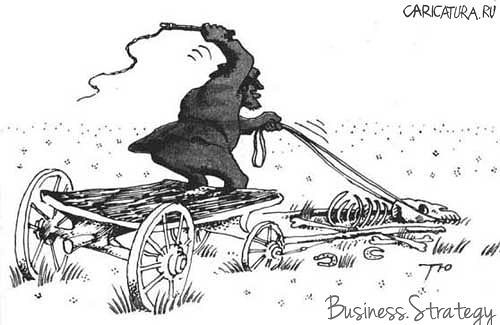
Do you know a story about a dead horse? Its meaning is that if your horse is dead, then it makes no sense to try to spur it (tight deadlines and KPI), give more oats (money) or drag it on yourself. It is necessary to bury her with dignity and transfer to a new one. But if the entrepreneur is stubborn and does not give up (and there are most of them), then it is easy to reanimate a patient who is already one for years.
On the other hand, not a single business was built without patience, perseverance and perseverance. That Thomas Edison with his 10,000 experiments with light bulbs, that Colonel Sanders with his recipe and 1,000 failures are all examples of success, dedication to their work and faith. And here the most interesting question arises: where is the line between perseverance and stupidity? When you need to quit and move on, and when to bite the bullet and continue? Let's understand our example of our project .
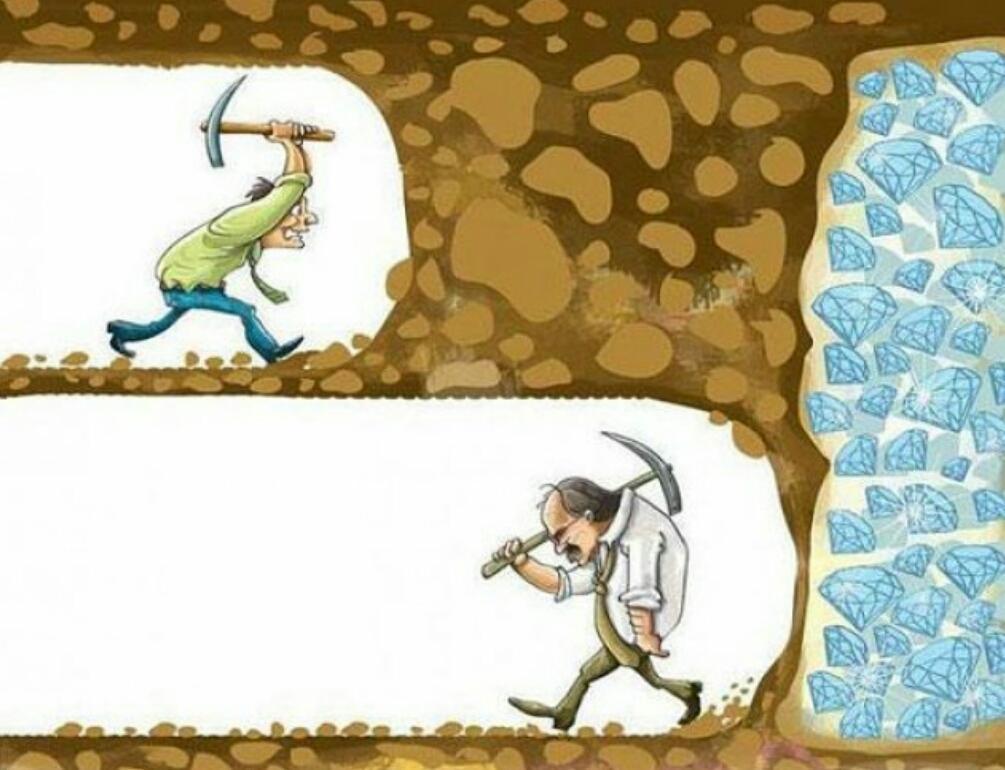
There are those rare cases when growth is immediately visible and it does not require any colossal effort. About 6-7 years ago I had one service for Vkontakte users. I launched it and a week later went on vacation. Some, as it is now fashionable to say, Growth hacks did not apply - a little context and SEO. But every month traffic doubled and the project grew by leaps and bounds. It was just luck.
Unfortunately, such cases are more likely exceptions to the rule. Usually everything is much more complicated and slower. Studying the history of successful Western startups, one can see how they somehow made ends meet for 1-2 years and only then fired. Below is an example of the growth of Airbnb. It can be seen that it took quite a while to adapt the product, find growth points, etc.:
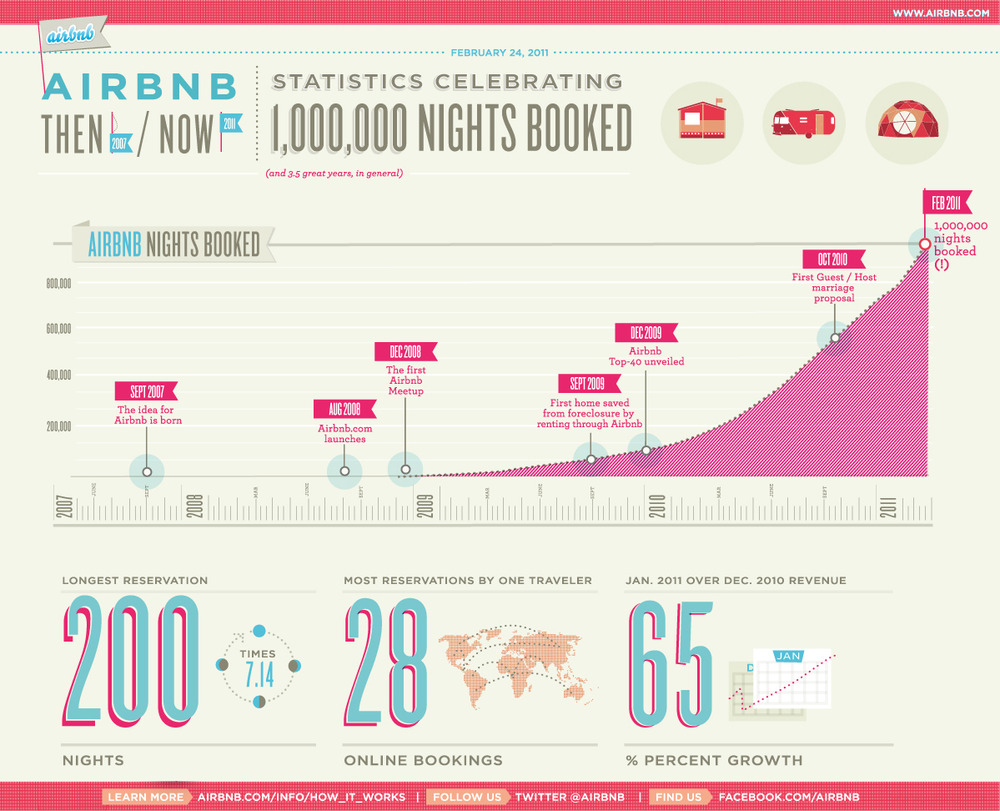
Link to the full image
In our project, there have been 265 registrations in the last month. Is it a lot or a little? There is definitely not a situation with "so much trouble", however, demand is clearly visible. I compared these indicators with the statistics of another project that was launched in 2010 and they are almost 3 times higher. Given that the team spent 0 rubles on promotion (with the exception of 6,000 rubles on the context for the test ideas ) - this is normal. For example, over the past week we received about 60 registrations, while there was no newsletter or publication.
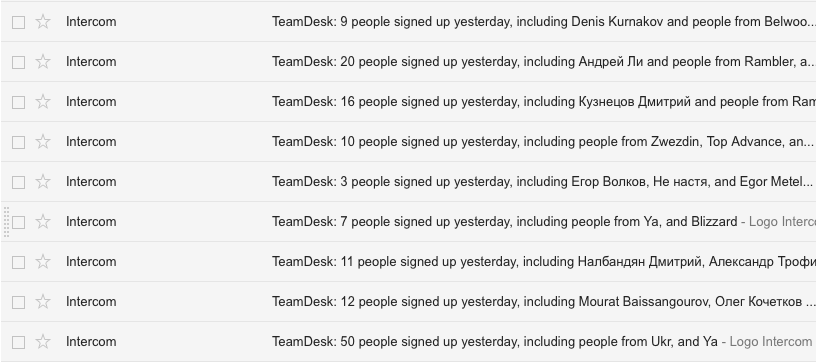
For comparison, we spent about 100,000 rubles and 3 months of full time marketing work on the promotion of another service for e-commerce. The results were comparable in the number of registrations. For myself, I concluded that it’s too early to draw conclusions =) There is interest and demand, how to learn how to convert it into customers en masse is the task of another stage of the company’s development.
While communicating with the guys, I noticed a significant difference in the speed of hypothesis testing and growth in b2c and b2b strataps. Having received these first two hundred registrations and several active users, there were doubts about the numbers, since the guys were counting on much larger numbers. But here it is important to understand what to compare with. If you used to work with b2c, where the volume of traffic is orders of magnitude greater and the speed of deciding on a purchase / action is much shorter, then the results will disappoint.
The scheme works for b2c services: I bought traffic for 1000 rubles, poured on the product, received sales / contacts. If everything is OK - flooded another 100,000 rubles. and increased turnover. For b2b software, everything is very different. Trust is required, time is needed for testing and decision making. Finally, sufficient product maturity and functionality is required. And the volumes of traffic are completely different.
Look at the development of other popular SaaS services (below is the statistics from wordstat.yandex.ru, which to some extent reflects the growth in popularity):
Bitrix24
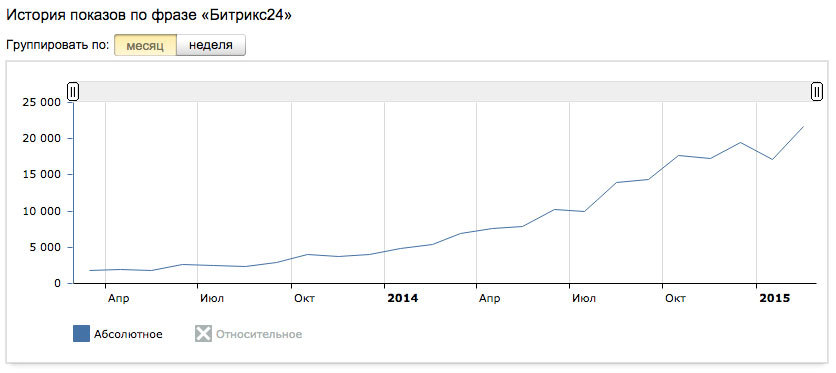
Callbackhunter
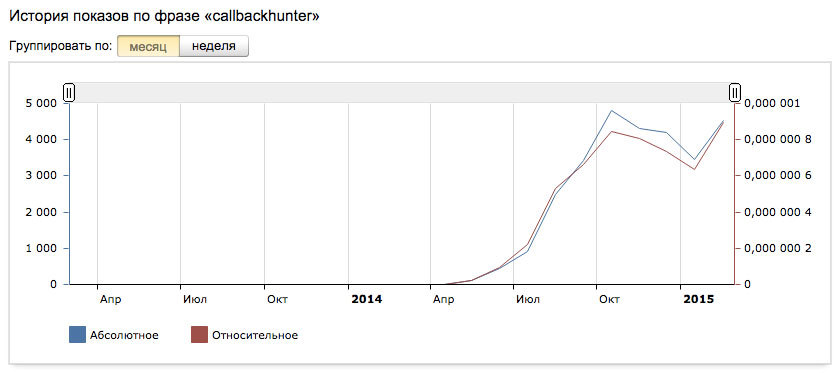
AmoCRM
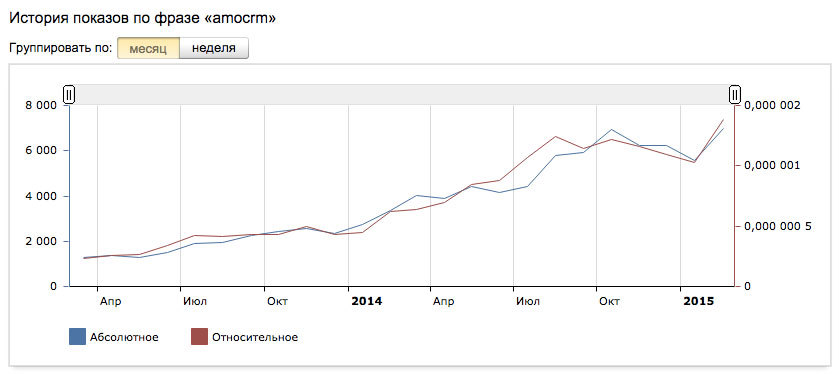
There is no stick or explosive growth. There is a systematic gradual growth, daily work and development.
Once upon a time I was engaged in the promotion of my own projects and their monetization on contextual advertising. For a whole year I developed a portal dedicated to anti-virus programs: I wrote content, posted links, searched for and published news. It took a whole year for the site to occupy good positions in search engines and gain enough traffic to be placed on the Yandex Advertising Network. At the time of the sale, he brought about 40,000 rubles / month with an average salary in those days in Bryansk of about 12,000 - 15,000 rubles per month.
If there is no entrepreneurial experience and knowledge of the subject area, then it may take 3 years to understand the real situation, get bumps and recognize mistakes. So in my current project, only after 3-3.5 years did I really understand what was happening. More experienced comrades may require 6 months.
Before Timdesk, we prepared a calendar plan and financial model, according to which we are moving towards the goal of 1,000,000 rubles in small steps:
Its essence is not to make high expectations and control the process, check against the planned indicators and draw conclusions. This helps to take a sober look at the situation (we grow faster, according to the plan or lag behind) and prevent the situation with a dead horse.
More than 300 users and 265 companies, less than two dozen active accounts and many requests for functionality. It's too early to talk about success or failure. We are going exactly according to the schedule, and we will check the expectations by numbers in the next couple of months. Therefore, the funding and development of the project continues unambiguously and the pace is increasing.
I do not believe in quick success and easy money. Business is always a marathon. But if you look philosophically at your life, then the entrepreneur has a maximum of 5-7 chances to try to make his dream a reality. And if you spend your time on “dead” horses, then you just don’t have time to do really something really worthwhile.

Do you know a story about a dead horse? Its meaning is that if your horse is dead, then it makes no sense to try to spur it (tight deadlines and KPI), give more oats (money) or drag it on yourself. It is necessary to bury her with dignity and transfer to a new one. But if the entrepreneur is stubborn and does not give up (and there are most of them), then it is easy to reanimate a patient who is already one for years.
On the other hand, not a single business was built without patience, perseverance and perseverance. That Thomas Edison with his 10,000 experiments with light bulbs, that Colonel Sanders with his recipe and 1,000 failures are all examples of success, dedication to their work and faith. And here the most interesting question arises: where is the line between perseverance and stupidity? When you need to quit and move on, and when to bite the bullet and continue? Let's understand our example of our project .

1. If rushing, then this is immediately clear
There are those rare cases when growth is immediately visible and it does not require any colossal effort. About 6-7 years ago I had one service for Vkontakte users. I launched it and a week later went on vacation. Some, as it is now fashionable to say, Growth hacks did not apply - a little context and SEO. But every month traffic doubled and the project grew by leaps and bounds. It was just luck.
Unfortunately, such cases are more likely exceptions to the rule. Usually everything is much more complicated and slower. Studying the history of successful Western startups, one can see how they somehow made ends meet for 1-2 years and only then fired. Below is an example of the growth of Airbnb. It can be seen that it took quite a while to adapt the product, find growth points, etc.:

Link to the full image
In our project, there have been 265 registrations in the last month. Is it a lot or a little? There is definitely not a situation with "so much trouble", however, demand is clearly visible. I compared these indicators with the statistics of another project that was launched in 2010 and they are almost 3 times higher. Given that the team spent 0 rubles on promotion (with the exception of 6,000 rubles on the context for the test ideas ) - this is normal. For example, over the past week we received about 60 registrations, while there was no newsletter or publication.

For comparison, we spent about 100,000 rubles and 3 months of full time marketing work on the promotion of another service for e-commerce. The results were comparable in the number of registrations. For myself, I concluded that it’s too early to draw conclusions =) There is interest and demand, how to learn how to convert it into customers en masse is the task of another stage of the company’s development.
2. The difference between b2c and b2b
While communicating with the guys, I noticed a significant difference in the speed of hypothesis testing and growth in b2c and b2b strataps. Having received these first two hundred registrations and several active users, there were doubts about the numbers, since the guys were counting on much larger numbers. But here it is important to understand what to compare with. If you used to work with b2c, where the volume of traffic is orders of magnitude greater and the speed of deciding on a purchase / action is much shorter, then the results will disappoint.
The scheme works for b2c services: I bought traffic for 1000 rubles, poured on the product, received sales / contacts. If everything is OK - flooded another 100,000 rubles. and increased turnover. For b2b software, everything is very different. Trust is required, time is needed for testing and decision making. Finally, sufficient product maturity and functionality is required. And the volumes of traffic are completely different.
Look at the development of other popular SaaS services (below is the statistics from wordstat.yandex.ru, which to some extent reflects the growth in popularity):
Bitrix24

Callbackhunter

AmoCRM

There is no stick or explosive growth. There is a systematic gradual growth, daily work and development.
3. Sometimes it just takes time
“Even 9 pregnant women will not be able to give birth to a baby in 1 month” ©
Once upon a time I was engaged in the promotion of my own projects and their monetization on contextual advertising. For a whole year I developed a portal dedicated to anti-virus programs: I wrote content, posted links, searched for and published news. It took a whole year for the site to occupy good positions in search engines and gain enough traffic to be placed on the Yandex Advertising Network. At the time of the sale, he brought about 40,000 rubles / month with an average salary in those days in Bryansk of about 12,000 - 15,000 rubles per month.
If there is no entrepreneurial experience and knowledge of the subject area, then it may take 3 years to understand the real situation, get bumps and recognize mistakes. So in my current project, only after 3-3.5 years did I really understand what was happening. More experienced comrades may require 6 months.
Before Timdesk, we prepared a calendar plan and financial model, according to which we are moving towards the goal of 1,000,000 rubles in small steps:
- Develop the first version and launch the open beta - until March 31, 2015.
- Get Product / Market fit - until April 30, 2015.
- Launch sales and get the first paid customers - until May 31, 2015.
- We optimize the funnel / tariffs / product for the growth of MRR and reduction of Churn - until July 31, 2015.
- We test all kinds of marketing channels and scale sales - until November 30, 2015.
Its essence is not to make high expectations and control the process, check against the planned indicators and draw conclusions. This helps to take a sober look at the situation (we grow faster, according to the plan or lag behind) and prevent the situation with a dead horse.
What do we have today in the project?
More than 300 users and 265 companies, less than two dozen active accounts and many requests for functionality. It's too early to talk about success or failure. We are going exactly according to the schedule, and we will check the expectations by numbers in the next couple of months. Therefore, the funding and development of the project continues unambiguously and the pace is increasing.
I do not believe in quick success and easy money. Business is always a marathon. But if you look philosophically at your life, then the entrepreneur has a maximum of 5-7 chances to try to make his dream a reality. And if you spend your time on “dead” horses, then you just don’t have time to do really something really worthwhile.
